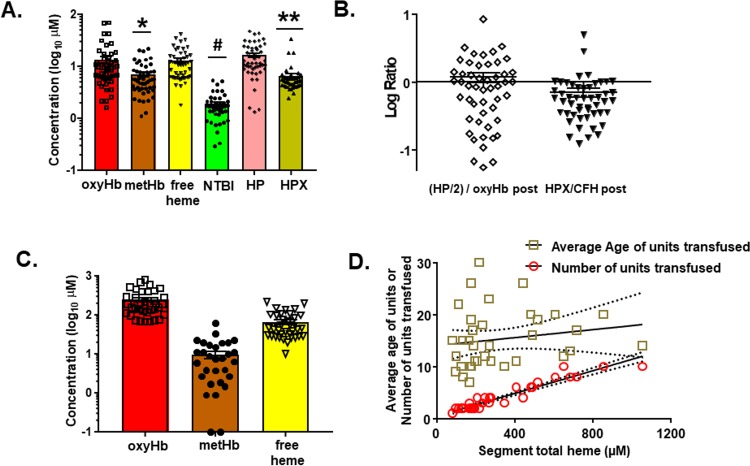Fig 6. Measurement of hemolysis products and heme-sequestering proteins in transfused units and plasma in trauma hemorrhage (TH) patients.
Fifty TH patients requiring blood product resuscitation admitted to the University of Alabama at Birmingham ER between 1 January 2015 and 30 April 2016 were enrolled. (A) Oxyhemoglobin (oxyHb), methemoglobin (metHb), free heme, haptoglobin (HP), and hemopexin (HPX) concentrations in plasma from TH patients 2–3 h after resuscitation. Data are mean ± SEM. *p = 0.002 relative to free heme; #p < 0.001 relative to oxyHb, metHb, and free heme; and **p < 0.001 relative to HP and free heme by Kruskal–Wallis test with Dunn’s multiple comparison test. (B) Molar ratios (log transformed) of HP/2:hemoglobin and HPX:heme. The former is presented as HP/2:oxyHb to reflect the fact that haptoglobin binds to hemoglobin dimers. Each data point reflects an individual patient. Data show mean ± SEM. Segments associated with red blood cell (RBC) units transfused and plasma from patients after stable resuscitation were collected. (C) Total oxyHb, metHb, and free heme concentrations in segments of RBC units transfused (n = 35). (D) Segment concentrations of total heme were plotted against the average storage age of the transfused RBCs or the number of units transfused. Line represents best fit by linear regression with 95% confidence intervals (dotted lines). Slope was significantly non-zero for number of units (r2 = 0.91, p < 0.001).

